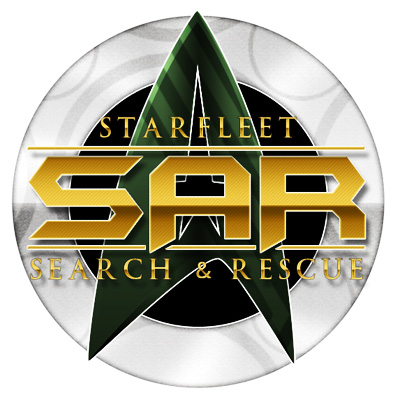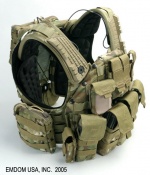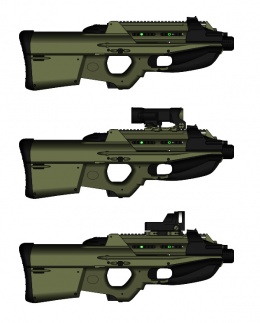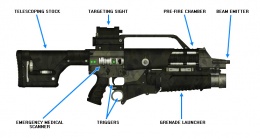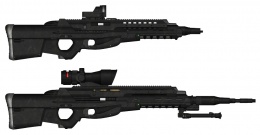Starfleet Search and Rescue
This notice was placed here by Whale, so go bug him to finish the page if nothing's happening.
Overview
Starfleet Search & Rescue is a sub-organisation of Starfleet that combines all active branches of the service, including marines. The organisation is managed through a number of autonomous operations centres, usually referred to as SAR Ops.
The various SAR Ops centres direct all search and rescue operations for their designated sector. For example, Starbase 94 SAR Ops coordinates missions for their area of space, while Deep Space 9 SAR Ops would coordinate for their area.
While there is no designated SAR starship, SAR Ops does have the ability to requisition Starfleet vessels and their crews to carry out their operations. In cases where a vessel has been temporarily assigned to a SAR Ops centre, a ranking member of that Ops centre is generally assigned to the vessel as a mission specilist to assist in the coordination of the mission. Frequently an entire SAR Team will also be assigned. All SAR Ops centres have various small craft at their disposal, such as runabouts, Mauls and Flamingoes, to assist in missions.
SAR Team Composition
SAR Teams do not generally have a standing roster -- meaning that it is very rare that an officer's sole responsibility would be to a SAR Team. Officers who serve on SAR Teams also have a primary responsibility, be it as an engineer on a starship, a doctor on a starbase, a pilot with a marine corps fighter wing. They are essentially on a stand-by roster and called the SAR Team duty as required.
Vessels with Active SAR Teams
Equipment
ISARAS
The Integrated Search and Rescue Armour System (ISARAS) is a modular armoured vest system based on the Crye and CIRAS systems of 21st century Earth, designed specifically for the varied duty requirements of the SAR Team. The vest itself provides superior protection from physical attack as well as substantial protection from most energy-based weapons fire.
The ISARAS can be fitted with numerous pouches and clips and customized to the individual wearer and their role on the SAR Team. For example, an engineer may have -- in addition to the phaser holster standard on all configurations -- a tricorder pouch and various tool and equipment pouches/clips, while a medical officer would carry advanced medkits, hyposprays, etc. A marine participant may have the majority of their ISARAS dedicated to carrying weaponry and explosives, depending on the role the individual has been asked to fill.
Search & Rescue Duty Uniform (SDU)
In certain circumstances, wearing a standard Starfleet duty inform is not practical. In such instances, SAR Teams can choose to wear a specially-designed duty uniform known as the SDU. The SDU is made of a lightweight, but extraordinarily durable synthetic fibre that is highly resistant to heat, cold and tearing. The SDU is also a temperature-regulating fabric, allowing its wearing to better adapt to extreme temperatures and/or rapid change in temperature.
Shown at right is the Marine version of the SDU. While deployed on a SAR Team, a participant would wear an SDU in the appropriate department colour.
Phaser Rifles
Type 33A1 CQC/SOSAR
The Type 33A1, as its name suggests, is an updated variation of the Type 33 CQC. As SAR operational requirements demanded more compact and versatile -- yet still powerful -- weapons, the Starfleet Corps of Engineers began producing the 33A1 in mid-2389. Though very similar to its predecessor, the 33A1 features a shorter barrel, lower profile, and the inclusion of a rail system onto which operators can attach a variety of scopes and optics according to situational requirements, personal preference, or both. Total length of the Type 33 CQC is 602mm (23.7 inches) and its weight is 2.54 kg (5.6 lbs).
The 33A1 is the primary weapon for Starfleet Search and Rescue going forward, due to its compact design and versatility.
Type 33 CQC
The Type 33 Close Quarters Combat Phaser Rifle is the newest addition to the Starfleet armoury. Production began in early 2388 in response to problems and concerns raised by Starfleet officers participating in the retaking of space station Deep Space 17 during the Second Battle of Eratis. The Type 33 CQC's compact design is intended to make operating in confined spaces, such as the corridors and jeffries tubes of DS17, far easier. Total length of the Type 33 CQC is 688mm (27.08 inches) and its weight is 2.54 kg (5.6 lbs).
Type 28
Initially designed as a special operations rifle for the Starfleet Marines, the Type 28 was quickly adopted as a useful mid-level workhorse rifle for Search and Rescue. Though not as compact as the Type 33, the 28's modular nature makes it a very useful tool -- the targeting sight can be swapped out for several different types of sight and the folding fore-grip can also be removed and replaced with a flashlight, scanner or one of several other types of tool.
Type 28 rifles were used during the failed SAR mission to Duster's Range by the crew of the USS Constitution-B.
Type 204 SOSAR
The Type 204 SOSAR (Special Operations - Search And Rescue) has the distinction of being the only phaser designed specifically for Starfleet Search and Rescue. Based loosely on the Type 200 rifle -- which is still used by some marine contingents -- the 204 SOSAR includes many improvements, including an adjustable telescoping stock, a rail system to allow the attachment of various scanning and infrared tools, an extremely durable plasteel body and the standard attachment of a grenade launcher (primarily for using "flash-bang" grenades).
The SOSAR is clearly a rifle used in more hostile situations, where it is known ahead of time that a SAR Team will face serious opposition to their goals from well-armed adversaries.
Type 32 and 32A OSR
A rather larger rifle, the Type 32's base design was adapted to become the Type 33 CQC. A workhorse rifle, the 32 is still used in many combat situations, primarily by Starfleet Marines, but also in some situations by Starfleet Security. Many prefer it's more ergonomic design to that of the SOSAR. It's length makes the 32 generally ill-suited to SAR operations, but it's Operational Support Rifle variant -- the Type 32A OSR -- has become standard equipment in any Search and Rescue department. Essentially a sniper rifle, the 32A goes by the much less militaristic sounding name of "Operational Support Rifle." The 32A OSR shares the same body as the Type 32, with a longer barrel, more advanced and higher quality targeting sight and a folding bipod. The purpose of the OSR is to provide support for evacuations and protection for SAR Team members performing their duties in hostile environments.
